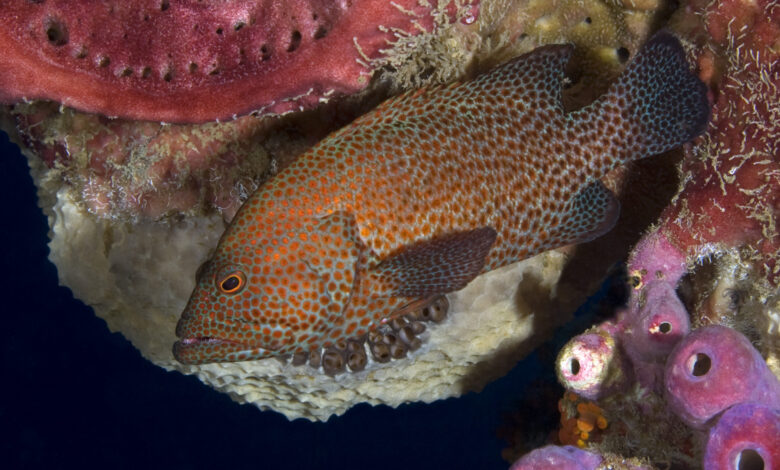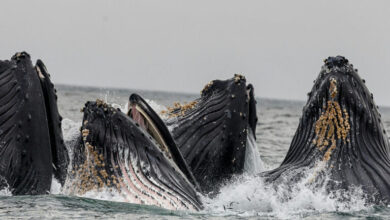
Red hind (Epinephelus guttatus) resting on sponges, Curacao, Netherlands Antilles. Photo Credit: Wild Horizon/Getty Images
Animals USAFish Species Recovers, Thanks to Decades of Efforts
The recovery of an important fish species off the coast of the U.S. Virgin Islands is proof of the success of marine conservation efforts deployed over three decades, which included management decisions, long-term monitoring, and fishing restrictions.
“This is a management and conservation success,” says Claire Rosemond, an Oregon State University doctoral student and lead author of the study. “The recovery of the red hind population at the spawning aggregation tracks management decisions, so it appears that fishing restrictions are helping to accomplish the intended goal of recovering the red hind population and fishery.”
Data had been collected between 1988 and 2009. In 1990, the Red Hind Bank Marine Conservation District was established to protect the fish spawning site, closing it during peak spawning activity (December to February). In 1999, the district was completely closed to fishing. Between 2018 and 2020, researchers took several trips, capturing, measuring, and releasing 1,203 red hinds, and were able to compare data from 1988. Turns out that fishing restrictions led to a 35% increase in fish size – almost 41 cm, close to 10 cm longer than when the first data were collected – and the male-to-female ratio was less skewed over time. Red hind, along with more than 200 species of marine fishes, reproduces by forming spawning aggregations at specific times and specific locations, and restricting fishing activities during those periods has proven to be crucial for the survival of those species as they are an important source of both income and food for local people.



